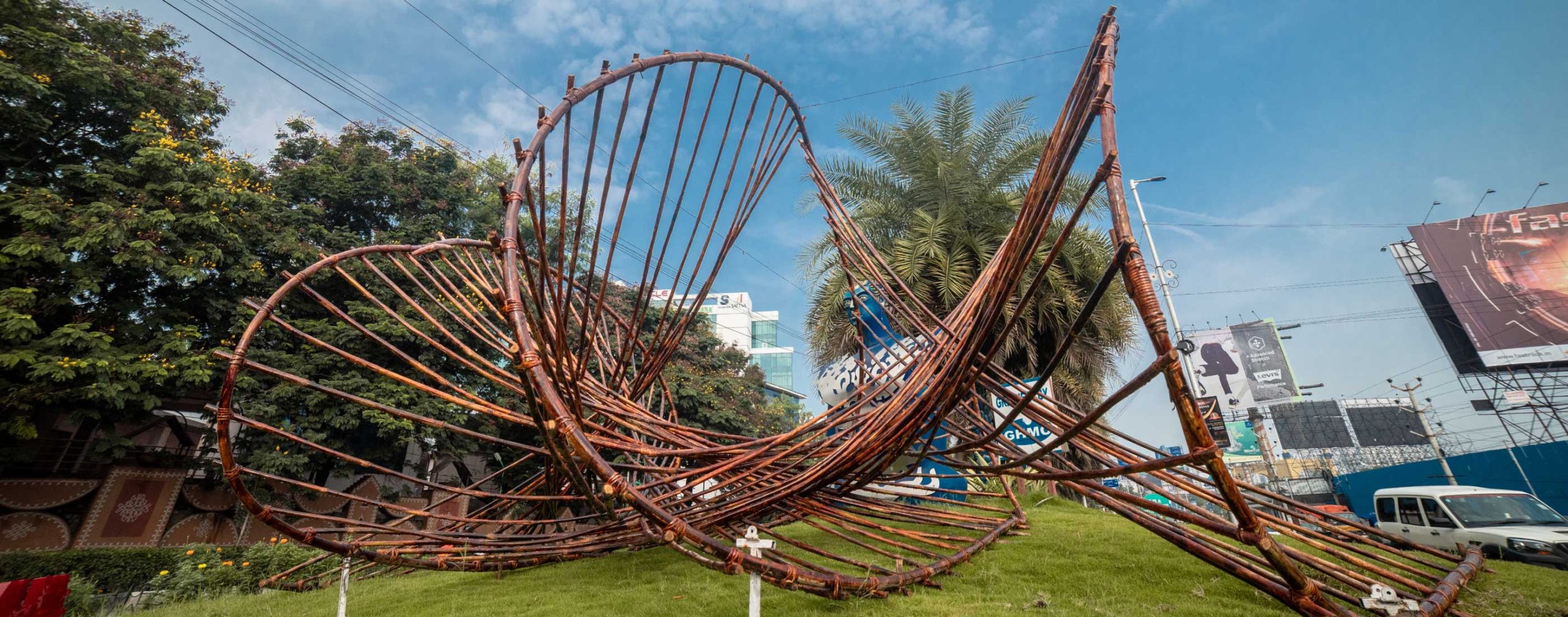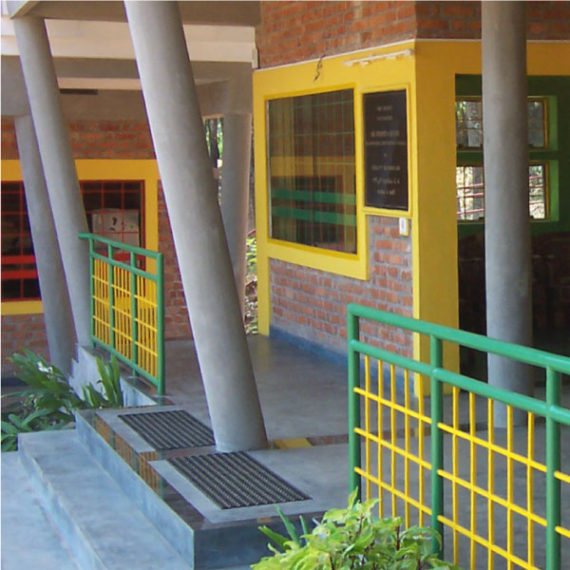16 Dec Takbir Fatima


A single architect can take many approaches to the design process, and arrive at many different outcomes. Pluralism in design
Doing vs thinking I believed that work needs to be perfect before it can go out into the world, but that thinking has since evolved.

Context The aim was to design something that is free of context and traditional baggage, such as the design of a contemporary mosque, free of ornamentation and markers of cultural identity.

In learning to design, I believed it was important to turn my back on context and design a mosque that is of everyone and everywhere at once. On the other hand, it allows for greater freedom in design research that was born of an understanding of materiality and behavior. Democratic design process A single architect can take many approaches to the design process, and arrive at many different outcomes.

Pluralism in design Countering the Single Solution Syndrome is important, and we must understand that design cannot have only one right answer. There may exist many different approaches and solutions that work for different context, people, times; multiple contradicting solutions can coexist in the design multiverse. Technology in design I have always believed that what can be done by hand can be done by machine, but technology should be an aid not a crutch. It is the human mind that dictates how to use technology.
Design and the design process should become open source and accessible, so that it can benefit the most.
Doing vs thinking I begin to think that, like in the tech industry, an MVP needs to be implemented so it can serve people, albeit imperfectly, and gather feedback for improvement. I also believe a real architect is an architect whose designs get built and used.

Context Design cannot be independent of context and must learn from the site. The site plays a very important role in dictating the design, and responding to the specific needs of context and community is what dictated a long-term project of a charity school carved into a cliff, which I am still involved in, and will be in the future. The future life of the building and its impact is an important consideration.

Democratic design process Design and the design process should become open source and accessible, so that it can benefit the most. Some parts of the design process can be made DIY so that lesser number of steps are required to ensure the design reaches the end user; the end user could complete some of this kit of parts themselves. An inclusive, collaborative, inter-disciplinary process is the future.

Pluralism in design I began thinking of prototypicality through the design of “systems” rather than single specific design solutions, and through mass-customization using digital tools. The time for single solutions specific to single problems is fading out and is being taken over by an adaptable, evolving design system. Technology in design I still believe that the human mind is the best of computers. However, harnessing the power and capabilities of technology by using it for something that cannot be done by humans and is free of human error is the best use of the machine. Digital fabrication allows for scaling of solutions to problems by making design open-sourced and replicable, even adaptable and customizable. Internet of things allows for control over everyday objects and these can form a feedback loop with the user, such as in our design of a Smart Office that is like a living building, just as Le Corbusier said, “A house is a machine for living in,” and today, we increasingly spend more time at work than at home.
Success in design is resultant of the contribution of many minds and many hands as opposed to a single master architect or designer.
Doing vs thinking I believe architecture and design is more about thinking than about doing; not all architects build and not all critique. Both are equally important for the greater advancement of the profession. In fact, it may be more important to spend time thinking about what we’re doing, and especially why, before we do it, to define our principles, meaning and purpose. Architects should begin to read, think and write more.

Context Beyond the immediate site and surrounds, there is a greater impact of design on the city and the world, on culture, in technological innovation and academic discourse, as well as, most importantly, its environmental impact create a ripple effect for generations to come. It is crucial for design and designer to situate themselves within this fluid context.

Democratic design process Success in design is resultant of the contribution of many minds and many hands as opposed to a single master architect or designer. It is time to acknowledge the many agents and moving parts that together create design. We are looking at crowdsourcing the design process by involving inter-disciplinary actors and students. Teaching and learning is a feedback loop. This was put into action through the design of a crowdsourced urban installation for Hyderabad, in which I mentored students in a Fractals Workshop through which they worked alongside fabricators and had their design executed for the city.

Pluralism in design Designer must relinquish control of the design process and embrace unpredictability. Letting more agents into the design process will allow for discoveries and solutions that are not pre-determined. Machine learning once systems are in place will allow us to take this way of working further by becoming comfortable with letting go of the steering wheel. Technology in design Technology of today can be used to revive the forgotten techniques of yesterday. There are reasons why some methods and ways of doing and building fade out. However, it is technology that can get over the hurdles faced for the survival of these methods. For example, the complex geometries of maqranas in Persian architecture are being studied, and algorithms developed that can create and evolve these designs. Age-old methods such as pottery and knitting are being adapted to become digital fabrication techniques that can build architecture on the same principles. We also use technology to study the bendability and structural strength of locally-sourced natural materials before creating new geometries from them.
Takbir Fatima
THEME
Architecture and Practice
DESIGN FIELD
Architecture and Practice
LOCATION
Hyderabad, India
STUDIO NAME
DesignAware
ABOUT
Takbir Fatima is an architect, and Director of the inter-disciplinary experimental design and architecture studio, DesignAware and the Fractals Workshop. She has an MArch in Architecture + Urbanism from the Design Research Lab at the Architectural Association (AA) School of Architecture in London. She is also a fellow of the Startup Leadership Program. Takbir was name Telangana Young Architect by the Indian Institute of Architects in 2016 and awarded the Emerging Architect of the Year by NDTV Design & Architecture Awards 2016. She was recognized in the annual selection of 50 emerging Indian architects and designers, iGen 50 in 2019. Takbir is also a TEDx speaker.
DesignAware was born of a desire to create awareness through liveable, wearable, usable, accessible and responsible design. Situated in Hyderabad and Dubai, the studio focuses on process-oriented design, and their projects range from lighting to furniture, interior design to renovation, and residential, commercial and institutional architecture, as well as socially-relevant projects, such as a school for students of disadvantaged backgrounds in the heritage zone of the Golconda Fort in Hyderabad. The school design has been widely published and has won the A’Design Award 2018, was declared Platinum Winner of Architecture Ideas 3.0 at the Festival of Architecture and Interior Design (FOAID) 2017, and a Special Mention in projects Responding to the Demands of Context and Community on The Merit List 2019. It was also nominated for the Aga Khan Award for Architecture 2017-19. The project was awarded the Silver green building certification by the Indian Green Building Council at the Green Building Congress 2018.
Takbir has created a series of generative design workshops for students and professionals called the Fractals Workshop, that combines design, structure, art, mathematics and computation. Since 2011, the workshop has been to various cities in India and the Middle East. The workshop was also an official part of Dubai Design Week 2018, Hyderabad Design Week and the World Design Assembly 2019, resulting in urban installations for the cities of Dubai and Hyderabad.


